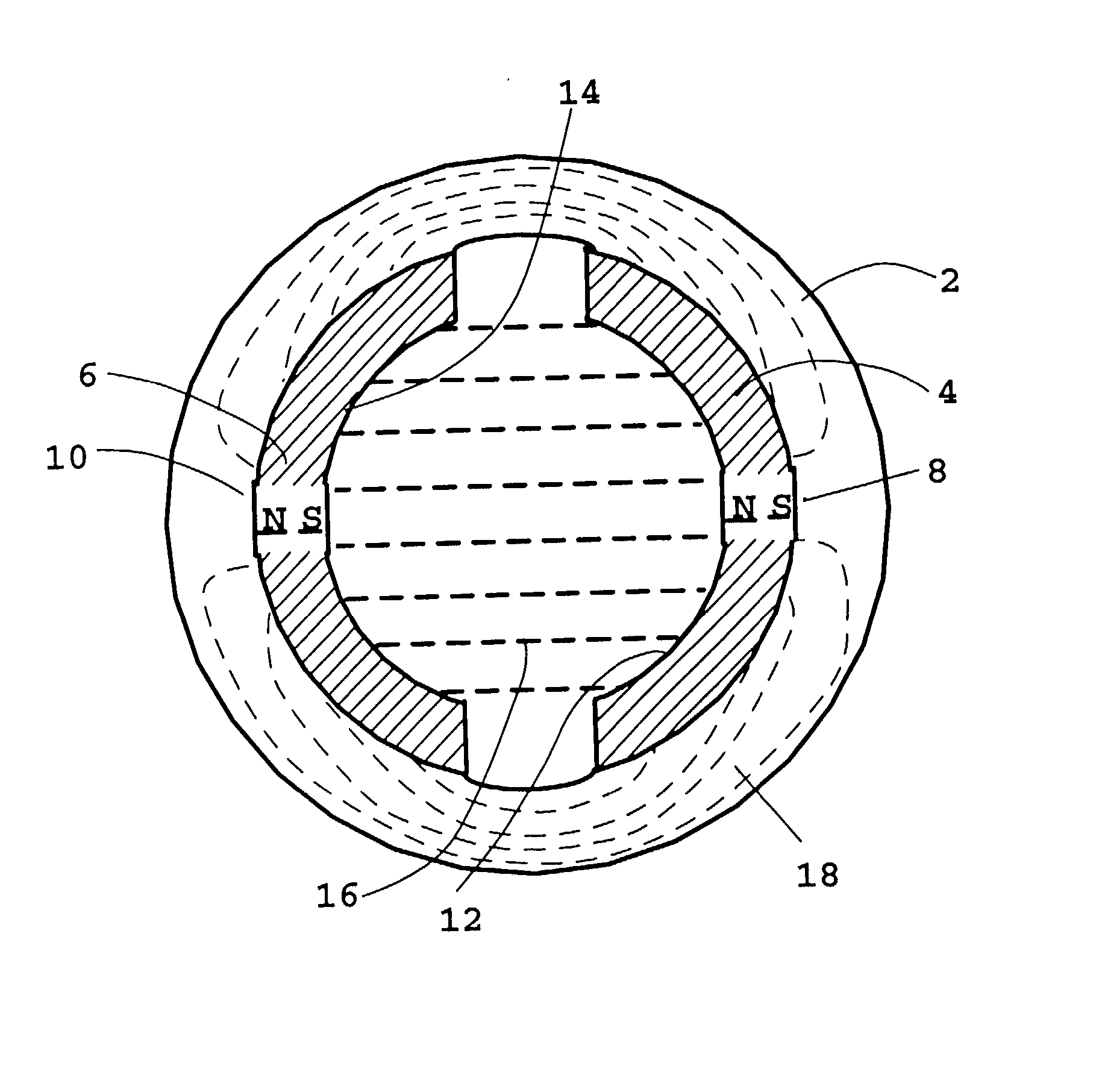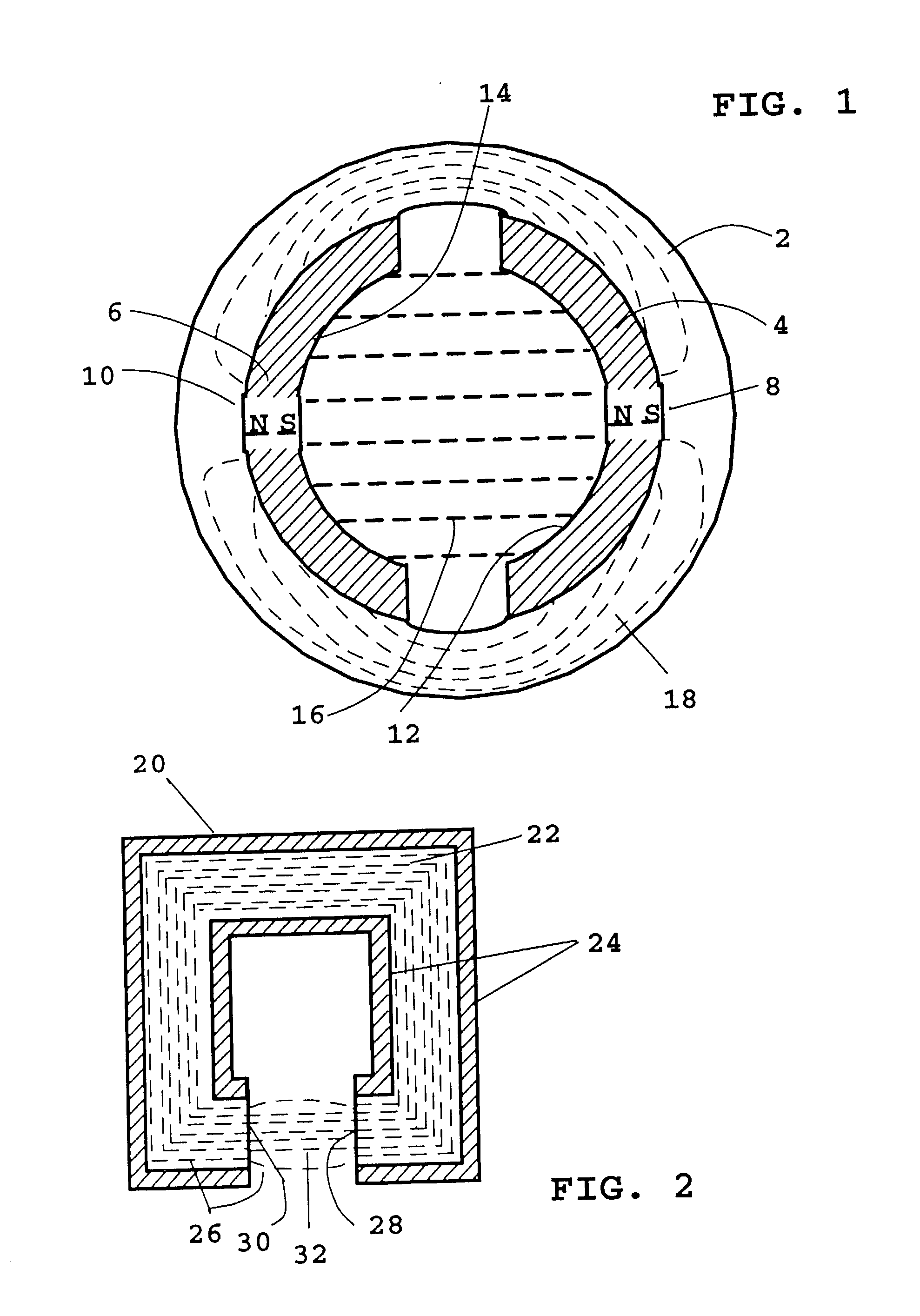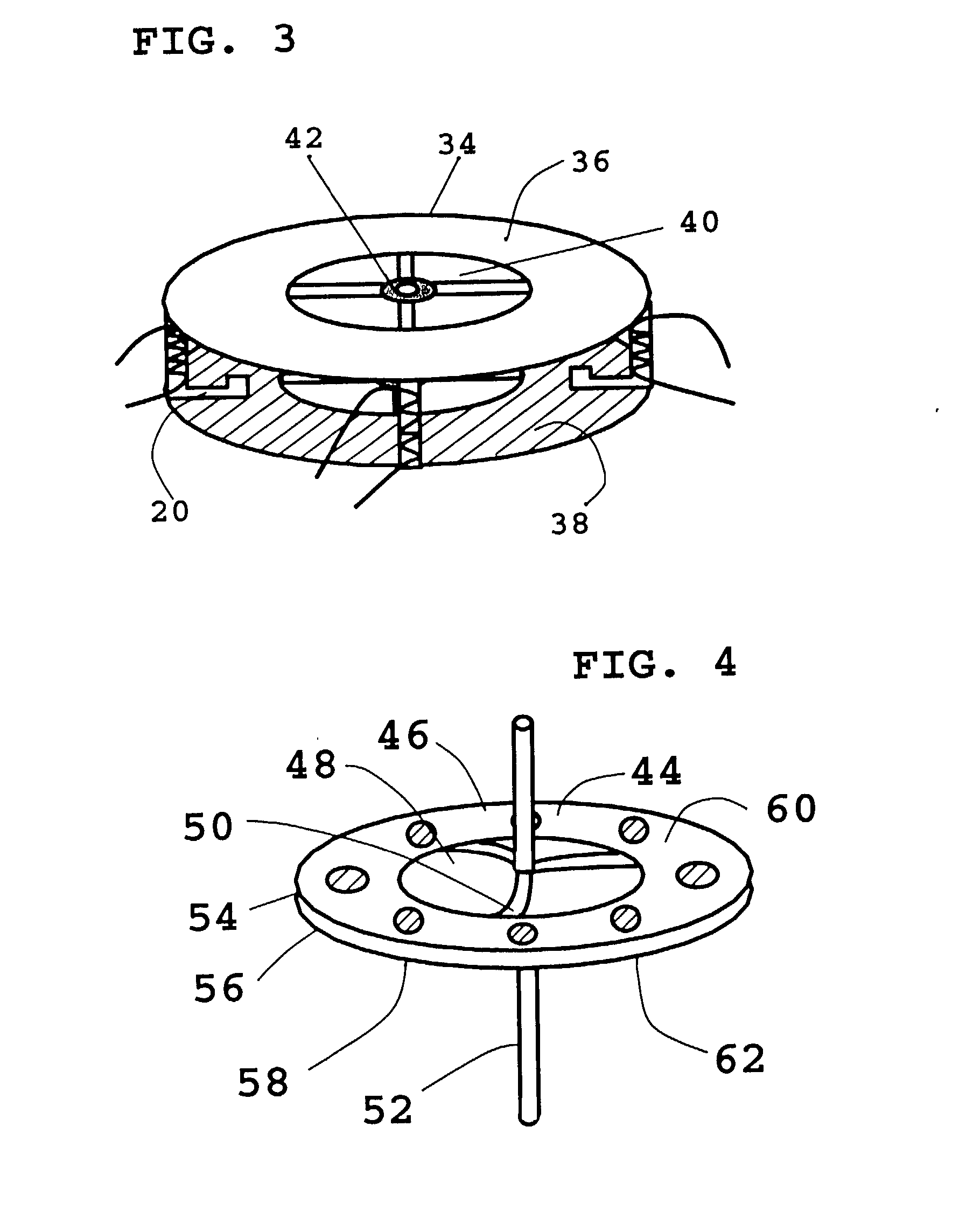Methods and apparatus for increasing power of permanent magnet motors
a permanent magnet motor and power technology, applied in the field of electric motors, can solve the problems of power must first be converted to ac, need for complex circuitry, and total failure of drive circuitry for producing ac power
- Summary
- Abstract
- Description
- Claims
- Application Information
AI Technical Summary
Benefits of technology
Problems solved by technology
Method used
Image
Examples
Embodiment Construction
[0084] FIG. 1 shows the open magnetic circuit in the stator portion of a traditional permanent magnet DC motor. Encased in thick steel housing 2 are permanent magnets 4 and 6 having opposite poles 8 and 10 against housing 2. Also shown are permanent magnet poles 12 and 14 which are aligned with each other across air gap 16. Also shown are lines of magnetic flux 18 which travel both through the motor housing 2 as well as through air gap 16. Thus, the completion of flux lines 18 from permanent magnets 4 and 6 requires a thick magnetic motor housing 2 as part of the magnetic circuit.
[0085] FIG. 2 shows the flux path produced by stator electromagnet 20 in the electric motor of this invention. Stator electromagnet 20 consists of a magnetic core 22 in the shape of a "C" which is wound with electromagnet wire 24. When electromagnet windings 24 are energized, magnetic flux 26 is generated in accordance with the right-hand rule of electrically induced magnetism. The magnetic flux 26 that is ...
PUM
 Login to View More
Login to View More Abstract
Description
Claims
Application Information
 Login to View More
Login to View More - R&D
- Intellectual Property
- Life Sciences
- Materials
- Tech Scout
- Unparalleled Data Quality
- Higher Quality Content
- 60% Fewer Hallucinations
Browse by: Latest US Patents, China's latest patents, Technical Efficacy Thesaurus, Application Domain, Technology Topic, Popular Technical Reports.
© 2025 PatSnap. All rights reserved.Legal|Privacy policy|Modern Slavery Act Transparency Statement|Sitemap|About US| Contact US: help@patsnap.com



